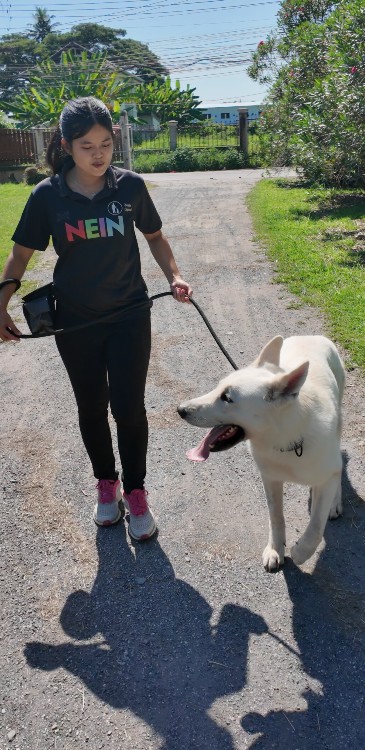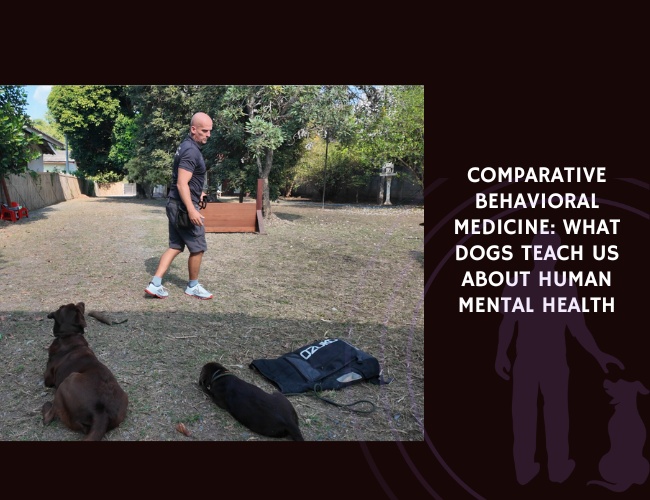Introduction: The Mystery of Your Sleeping Companion
Have you ever watched your furry friend sleeping peacefully, only to see their paws start paddling through the air as if chasing an invisible squirrel? Perhaps you’ve noticed soft whimpers or tail wags while they’re deep in slumber. These moments make us wonder: do dogs dream? The answer, according to modern neuroscience and behavioral research, is a resounding yes. Dogs not only dream but experience complex sleep patterns remarkably similar to our own, complete with vivid dream sequences that may replay their daily adventures, process emotions, and consolidate memories.
The journey into understanding canine dreams takes us through fascinating neurological territory. From the intricate dance of REM and non-REM sleep cycles to the emotional processing that occurs in your dog’s sleeping brain, we’re discovering that our four-legged companions have rich inner lives that continue even as they snooze beside us. This exploration isn’t just academically interesting—understanding your dog’s dreams can help you better support their emotional wellbeing, recognize potential sleep disorders, and strengthen the bond you share with your canine companion. 🐾
The Neuroscience of Canine Sleep
Understanding REM Sleep in Dogs
Let us guide you through the remarkable world of canine REM (Rapid Eye Movement) sleep, where the magic of dreaming unfolds. Just like humans, dogs experience distinct sleep phases, with REM sleep accounting for about 10-12% of their total sleep time—though puppies may spend up to 20% in this dream-rich state. During REM sleep, your dog’s brain becomes almost as active as when they’re awake, creating the perfect neurological environment for dreams to flourish.
The presence of REM sleep in dogs isn’t just a curious similarity to humans; it represents an evolutionary advantage that has been preserved across mammalian species. This sleep phase serves crucial functions in cognitive processing, helping your dog make sense of their daily experiences. When your furry friend enters REM sleep, typically about 20 minutes after falling asleep, their brain begins a complex symphony of neural activity that mirrors the patterns we see in dreaming humans.
What makes REM sleep particularly fascinating in dogs is how it varies with age and breed. Puppies, much like human infants, spend significantly more time in REM sleep, suggesting this phase plays a vital role in brain development and learning. Senior dogs, on the other hand, may experience changes in their REM patterns, which can affect their cognitive health and emotional wellbeing.
EEG Patterns: Reading Your Dog’s Sleeping Brain
Electroencephalography (EEG) studies have revolutionized our understanding of canine sleep, revealing brain wave patterns that tell a compelling story about what happens when your dog drifts off to dreamland. These electrical signatures of brain activity show remarkable similarities to human sleep patterns, including the presence of sleep spindles—brief bursts of neural activity that appear during non-REM sleep and are linked to memory consolidation.
During non-REM sleep, your dog’s brain exhibits slow, synchronized waves that help process and store information from their waking hours. These patterns transition dramatically when REM sleep begins, shifting to faster, more varied frequencies that resemble waking brain activity. This transformation suggests that dogs, like humans, experience rich mental activity during their dreams.
The density and frequency of these EEG transients correlate directly with your dog’s ability to retain learned behaviors and commands. Dogs who show more robust sleep spindle activity tend to perform better on memory tasks the following day, demonstrating that quality sleep isn’t just about rest—it’s about active cognitive maintenance and enhancement.
The Limbic System’s Nighttime Symphony
Deep within your dog’s brain, the limbic system—the emotional command center—remains surprisingly active during sleep, particularly during REM phases. This activation suggests that dogs don’t just dream; they experience emotional content in their dreams, potentially processing feelings of joy, fear, excitement, or contentment from their daily experiences.
The amygdala, a key component of the limbic system responsible for processing emotions and forming emotional memories, shows heightened activity during canine REM sleep. This means your dog might be emotionally experiencing their dreams, not just visually replaying events. When you see your sleeping dog’s tail wagging or hear a soft whimper, they might be experiencing genuine emotional responses to their dream content.
This emotional processing during sleep serves an important function in maintaining your dog’s psychological health. Just as humans use dreams to process complex emotions and experiences, dogs may use their dream time to work through anxieties, reinforce positive associations, and integrate emotional learning from their waking lives.
Behavioral Signs of Dreaming
Physical Manifestations: When Dreams Come to Life
You might notice your sleeping dog suddenly starts moving their paws in a running motion, their whiskers twitching, or their tail giving gentle wags. These physical manifestations aren’t random muscle spasms—they’re likely reflections of your dog’s dream content. During REM sleep, the brain typically inhibits major muscle movements to prevent us (and our dogs) from physically acting out our dreams. However, this inhibition isn’t perfect, allowing small movements to leak through.
The paw paddling you observe might indicate your dog is dreaming about running through their favorite park or chasing that elusive tennis ball. Facial twitches could suggest they’re experiencing social interactions in their dreams, perhaps playing with their canine friends or greeting you at the door. These movements provide us with precious glimpses into the dream scenarios playing out in your dog’s mind.
Interestingly, the intensity and frequency of these movements can vary based on your dog’s daily activities. Dogs who’ve had particularly active or stimulating days often show more pronounced physical responses during sleep, suggesting their brains are actively processing and consolidating these experiences through dreams.
Vocalizations: The Soundtrack of Dreams
The soft whimpers, muffled barks, or gentle growls you hear from your sleeping dog tell their own story about dream content. These vocalizations during sleep are particularly common during REM phases and may represent your dog’s attempt to communicate within their dream world. Unlike conscious vocalizations, these sleep sounds are often softer, more muffled, and may have different tonal qualities than your dog’s wakeful voice.
Research suggests that the type of vocalization can provide clues about the emotional content of the dream. Soft, happy sounds like gentle woofs or contented sighs might indicate pleasant dream scenarios—perhaps reliving a satisfying meal or a fun play session. Conversely, whimpers or distressed sounds could suggest your dog is processing more challenging experiences or working through anxieties in their sleep.
It’s important to note that occasional vocalizations during sleep are completely normal and healthy. They indicate that your dog’s brain is actively engaged in the important work of emotional and cognitive processing. However, excessive or consistently distressed vocalizations might warrant a conversation with your veterinarian to rule out any underlying issues.

Eye Movement: Windows to the Dream World
Perhaps the most telling sign that your dog is dreaming comes from watching their eyes during sleep. Even with eyelids closed, you can often observe rapid movements beneath—the hallmark of REM sleep that gives this sleep phase its name. These eye movements aren’t random; research suggests they may correspond to visual tracking in dreams, just as they do in humans.
The direction and pattern of these eye movements might even reflect what your dog is “looking at” in their dreams. Quick, darting movements could indicate an action-packed dream sequence, while slower, more rhythmic movements might suggest calmer dream content. This phenomenon provides compelling evidence that dogs experience visual imagery in their dreams, not just abstract sensations or emotions.
The presence and intensity of rapid eye movements can also serve as an indicator of sleep quality. Dogs experiencing healthy, restorative sleep will show clear periods of REM with characteristic eye movements, while sleep disturbances or certain health conditions might alter these patterns.
Learning and Memory Consolidation Through Dreams
The REM-Memory Connection
Did you know that your dog’s ability to remember and perfect that new trick you taught them yesterday might depend on the quality of their dreams tonight? The relationship between REM sleep and procedural memory in dogs is profound and well-documented. During REM sleep, the brain replays and strengthens neural pathways associated with recently learned behaviors, essentially practicing skills while sleeping.
Studies have shown that dogs who experience uninterrupted REM sleep after training sessions demonstrate significantly better retention of learned commands and behaviors. This consolidation process transforms short-term memories into long-term ones, embedding new skills deep into your dog’s behavioral repertoire. The brain uses dream time to run through various scenarios and variations of learned behaviors, strengthening the neural connections that will make these behaviors automatic and reliable.
This memory consolidation extends beyond simple commands to complex behavioral sequences. Working dogs, for instance, may dream about intricate search patterns or herding sequences, reinforcing these sophisticated skills through mental rehearsal during sleep. This explains why consistent, quality sleep is crucial for dogs in training programs or those learning new household routines.
Emotional Memory and Fear Processing
Your dog’s dreams play a crucial role in processing emotional experiences and managing fear responses. During REM sleep, the brain works to integrate emotional memories, helping your dog make sense of scary, exciting, or confusing experiences from their day. This processing is essential for emotional resilience and behavioral stability.
The connection between sleep and fear extinction is particularly important for dogs who’ve experienced trauma or have anxiety issues. During dreams, the brain can safely revisit and reprocess frightening experiences in a controlled neural environment, gradually reducing the emotional charge associated with these memories. Dogs who get adequate REM sleep after exposure to mild stressors show better adaptation and reduced anxiety responses in subsequent encounters.
However, this process can be disrupted by sleep disturbances, leading to incomplete emotional processing. Dogs with interrupted sleep patterns may struggle to overcome fears or may develop heightened anxiety responses. This understanding highlights the importance of providing your furry friend with a safe, comfortable sleeping environment where they can complete these essential emotional processing cycles.
The Impact of Sleep Deprivation
When dogs don’t get enough quality sleep, particularly REM sleep, the consequences extend far beyond simple tiredness. Sleep-deprived dogs show measurable deficits in learning ability, memory retention, and emotional regulation. They may struggle to remember previously learned commands, show increased irritability, or display heightened anxiety responses to normal stimuli.
Research has demonstrated that even partial sleep deprivation can impact a dog’s cognitive performance. Dogs who experience interrupted sleep or insufficient REM cycles may take longer to learn new tasks and show inconsistent responses to known commands. This isn’t due to disobedience but rather the brain’s inability to properly consolidate and retrieve information without adequate sleep.
The effects of sleep deprivation can create a concerning cycle: stressed or anxious dogs often experience disrupted sleep, which in turn impairs their ability to process and overcome their anxieties, leading to further sleep problems. Breaking this cycle requires addressing both the sleep issues and their underlying causes, often with the help of veterinary professionals or certified animal behaviorists.
Silent. Vivid. Alive.
Sleep holds their stories. Within the stillness of night, your dog’s mind replays moments, processes emotions, and stitches experiences into lasting memories. Each twitch or sigh is a subtle echo of the day’s adventures.
Dreams speak in movement. Paw paddles, whisker twitches, and tail wags are more than random motions—they’re the physical whispers of imagined chases, joyful play, or thoughtful recall, shaped by REM’s vivid theatre.



The night shapes the day. Restful, uninterrupted sleep fuels learning, emotional balance, and connection. By protecting your dog’s nightly rhythms, you nurture both their mind and their bond with you.
Life Experiences and Dream Content
Daily Replay Theory: Your Dog’s Mental Movie Reel
The hypothesis that dogs replay daily events in their dreams isn’t just romantic speculation—it’s supported by compelling neurological evidence. Just as humans often dream about recent experiences, your dog’s brain likely uses dream time to revisit and process the day’s adventures. That exciting trip to the dog park, the new friend they met on their walk, or even the frustration of not catching that squirrel might all become material for nighttime mental movies.
This replay serves important functions beyond simple repetition. During dreams, your dog’s brain can explore different outcomes, combine experiences in novel ways, and strengthen important memories while discarding irrelevant information. This process helps your dog build a coherent understanding of their world and prepare for future similar situations.
The content of these replayed experiences likely varies based on what your dog found most significant or emotionally charged during their day. A particularly rewarding training session might be replayed and reinforced, while a stressful vet visit might be processed and integrated to reduce future anxiety. Understanding this can help you provide positive experiences that contribute to pleasant dreams and better emotional wellbeing.
The Power of Scent in Canine Dreams
Given that dogs experience the world primarily through their incredible sense of smell, it’s fascinating to consider how olfactory memories might influence their dreams. Your dog’s brain dedicates significantly more processing power to analyzing scents than humans do, and this olfactory dominance likely extends into their dream world.
Olfactory memories are processed differently than visual or auditory ones, often triggering more vivid and emotional responses. When your dog dreams, they might be experiencing a rich tapestry of remembered scents—the comforting smell of their favorite human, the exciting aroma of that hidden treat, or the intriguing scent trails from their daily walk. These olfactory dreams could be far more vivid and meaningful to dogs than any visual component.
This understanding has practical implications for your dog’s wellbeing. Providing positive olfactory experiences during the day—through engaging scent games, exposure to calming aromatherapy, or simply ensuring their bedding carries comforting familiar scents—might contribute to more pleasant and restorative dreams.
Working Dogs vs. Companion Dogs: Different Dreams for Different Lives
The varied lifestyles of working dogs versus companion dogs likely create distinctly different dream content. A search and rescue dog might dream about following scent trails through rubble, while a herding dog might mentally rehearse moving sheep through gates. These job-specific dreams serve as additional practice time, reinforcing the specialized skills these dogs need for their work.
Companion dogs, while not having formal jobs, still likely dream about their important daily activities—greeting family members, patrol routes around the house, or the social dynamics at the local dog park. Their dreams might focus more on social bonding and routine activities that define their role in the family pack.
Interestingly, retired working dogs often show changes in their sleep patterns and apparent dream content. Handlers report that newly retired service dogs sometimes exhibit sleep behaviors suggesting they’re still “working” in their dreams, gradually transitioning to more relaxed sleep patterns as they adjust to retirement. This observation supports the idea that a dog’s daily experiences profoundly shape their dream content.
Emotional Implications of Dreaming
Processing Stress and Trauma Through Dreams
Your dog’s dreams serve as a crucial mechanism for processing difficult experiences and managing stress. During REM sleep, the brain can safely revisit challenging situations without the immediate threat response that would occur while awake. This allows for gradual desensitization and integration of traumatic memories into less threatening narrative frameworks.
Dogs who’ve experienced trauma—whether from abuse, accidents, or frightening events—often show distinctive sleep patterns. They might experience more frequent sleep disturbances, increased vocalizations during sleep, or physical responses suggesting distressing dream content. However, with time and positive experiences, these patterns typically improve as the brain successfully processes and integrates these difficult memories.
Supporting your dog through trauma recovery involves ensuring they have safe, uninterrupted sleep opportunities. Creating a secure sleeping environment, maintaining consistent routines, and providing comfort without inadvertently reinforcing anxiety can help facilitate healthy emotional processing through dreams. Some dogs benefit from sleeping near their humans during recovery periods, as the familiar presence can provide security that promotes more restful, healing sleep.
The Anxiety-Sleep Connection
The relationship between sleep disturbances and anxiety disorders in dogs creates a complex web that can be challenging to untangle. Anxious dogs often experience fragmented sleep, with frequent awakenings that interrupt the crucial REM cycles needed for emotional processing. This disrupted sleep then impairs their ability to regulate emotions during waking hours, potentially worsening anxiety symptoms.
Signs that your dog might be experiencing anxiety-related sleep issues include restlessness at bedtime, frequent position changes during sleep, excessive vigilance even while resting, or sudden awakenings with signs of distress. These patterns prevent your dog from achieving the deep, restorative sleep necessary for emotional balance and cognitive health.
Addressing sleep-related anxiety requires a multifaceted approach. Environmental modifications like providing a quiet, comfortable sleeping space away from household traffic, using calming pheromone diffusers, or playing soft background noise can help. Some dogs benefit from anxiety wraps or weighted blankets that provide gentle, constant pressure. In severe cases, veterinary intervention might be necessary to break the anxiety-sleep disturbance cycle.
Reading Dream Emotions: Positive vs. Negative States
Learning to recognize whether your dog is experiencing positive or negative dreams can help you better support their emotional wellbeing. Positive dream states often manifest as relaxed facial expressions, gentle tail movements, soft sighs or quiet woofs, and overall loose, comfortable body posture even during movement. These signs suggest your dog is processing pleasant experiences or enjoying rewarding dream scenarios.
Negative dream states might involve tense muscles, curled lips or bared teeth, distressed vocalizations like whimpers or growls, rapid breathing, or sudden startling movements. While occasional negative dreams are normal and serve important processing functions, frequent distressing dreams might indicate underlying anxiety or unresolved trauma that needs attention.
It’s important to resist the urge to wake a dog experiencing what appears to be a bad dream. The brain needs to complete these processing cycles, even when they involve difficult content. Instead, you can provide comfort by speaking softly and reassuringly without touching them, allowing them to naturally transition to a calmer sleep state. If distressing dreams become frequent or severe, consulting with a veterinary behaviorist can help identify and address underlying issues.

Age-Related Changes in Dream Patterns
Puppy Dreams: Building Neural Highways
Puppies spend an extraordinary amount of time dreaming—up to 20% of their sleep in REM phases compared to 10-12% for adult dogs. This increased dream time isn’t just adorable; it’s essential for brain development. During these extended dream periods, puppy brains are building and strengthening neural connections that will serve them throughout their lives.
The content of puppy dreams likely focuses heavily on learning and social development. Those twitching paws might be practicing the motor skills they’re just beginning to master, while soft nursing sounds during sleep suggest dreams about their mother and littermates. These early dreams help puppies integrate the overwhelming amount of new information they encounter daily in their rapidly expanding world.
Supporting healthy dream patterns in puppies involves providing consistent sleep schedules with minimal disruption. Puppies need 18-20 hours of sleep daily, and ensuring they get adequate uninterrupted rest supports both physical growth and cognitive development. Creating positive associations with sleep spaces and maintaining calm environments during rest periods helps establish lifelong healthy sleep habits.
Adult Dogs: The Maintenance Phase
Adult dogs settle into more predictable dream patterns, with REM sleep comprising about 10-12% of their total sleep time. Their dreams likely focus on reinforcing established behaviors, processing daily social interactions, and maintaining emotional equilibrium. The physical manifestations of dreams in adult dogs are often more subtle than in puppies but still provide windows into their mental processing.
During their prime years, dogs use dreams to fine-tune their responses to their environment. A well-adjusted adult dog’s dreams might involve routine activities—patrol routes around the yard, play sessions with favorite toys, or meals with the family. These dreams reinforce the patterns and relationships that define their daily lives, contributing to behavioral consistency and emotional stability.
Adult dogs also show interesting patterns in how their daily activities influence their dreams. Dogs with more varied, stimulating days often display more active REM sleep, while those with routine, predictable schedules might show calmer sleep patterns. This doesn’t mean one is better than the other; rather, it reflects how individual dogs process their unique life experiences through dreams.
Senior Dreams: Changing Patterns and Special Considerations
As dogs age, their sleep patterns undergo significant changes that can affect both the quantity and quality of their dreams. Senior dogs often experience more fragmented sleep, waking more frequently during the night and showing altered REM patterns. These changes can impact their cognitive function and emotional wellbeing, making understanding and supporting senior sleep particularly important.
Cognitive dysfunction syndrome, similar to dementia in humans, can dramatically affect sleep and dream patterns in older dogs. Affected dogs might experience confusion between sleep and wake states, show increased nighttime activity, or exhibit signs of distress during sleep. These changes in dream patterns can be early indicators of cognitive decline, making them important markers for veterinary assessment.
Supporting senior dogs’ sleep and dream health requires special attention to comfort and routine. Orthopedic beds can ease joint discomfort that might disrupt sleep, while nightlights can help disoriented dogs navigate if they wake. Maintaining consistent routines becomes even more important, as predictability can help reduce anxiety and promote better sleep quality. Some senior dogs benefit from supplements or medications that support cognitive function and sleep quality, though these should always be discussed with a veterinarian.
Practical Applications for Dog Owners
Creating an Optimal Sleep Environment
Understanding that your dog dreams and that these dreams serve important functions should inspire you to create the best possible sleep environment for your furry friend. The ideal sleeping space combines physical comfort with emotional security, allowing your dog to cycle through all sleep stages without disruption.
Temperature regulation is crucial—dogs sleep best in environments that are slightly cool but not cold. Providing bedding that allows for temperature adjustment, such as blankets they can burrow under or kick off, helps them maintain comfort throughout their sleep cycles. The location of the bed matters too; many dogs prefer sleeping spaces that offer a view of the room’s entrances while still feeling protected, satisfying their instinctual need for security.
Consider the sensory environment as well. While some dogs sleep soundly through household noise, others benefit from white noise or calming music that masks disruptive sounds. Since scent plays such a crucial role in canine comfort, maintaining familiar smells in the sleeping area—perhaps by not washing their bedding too frequently or providing a piece of your clothing—can promote more restful sleep and potentially more pleasant dreams.
Recognizing Sleep Disorders
Being aware that dogs dream normally helps you recognize when something might be wrong with your dog’s sleep patterns. REM behavior disorder, where the normal muscle paralysis during REM sleep fails, can cause dogs to physically act out their dreams in potentially dangerous ways. This differs from normal dream movements in its intensity and potential for injury.
Sleep apnea, more common in brachycephalic breeds, interrupts normal sleep cycles and can prevent dogs from reaching the deep REM sleep necessary for dreaming and cognitive restoration. Signs include loud snoring, gasping for air during sleep, and excessive daytime sleepiness. These interruptions not only affect dream quality but can have serious health implications.
Narcolepsy, though rare, can cause sudden sleep attacks during normal waking activities. Affected dogs might collapse into REM sleep suddenly, complete with dreams, while in the middle of eating or playing. This condition requires veterinary management but understanding the role of dreams in normal sleep helps owners better describe symptoms to their veterinarians.
Supporting Healthy Dream Patterns
You can actively support your dog’s dream health through thoughtful daily management. Providing appropriate mental stimulation during waking hours gives your dog’s brain rich material to process during dreams. This doesn’t mean overwhelming them—quality experiences that engage their natural behaviors and interests create the best foundation for restorative dreams.
Exercise timing matters more than you might think. While physical activity is crucial for good sleep, intense exercise right before bedtime can leave dogs too stimulated to settle into quality sleep. Aim to finish vigorous activities at least two hours before your dog’s usual bedtime, allowing time for them to wind down naturally.
Nutrition also plays a role in dream quality. Dogs who go to bed hungry might experience disrupted sleep, while those who eat large meals right before bed might be uncomfortable. Finding the right balance—perhaps a small, protein-rich snack an hour before bedtime—can promote more restful sleep and better dream cycles.
The Future of Canine Dream Research
Emerging Technologies and Methodologies
The field of canine dream research is advancing rapidly, with new technologies offering unprecedented insights into what happens in your dog’s sleeping brain. Advanced neuroimaging techniques are beginning to map which brain regions activate during different sleep stages, potentially allowing researchers to decode dream content more accurately than ever before.
Wearable technology for dogs is becoming increasingly sophisticated, with devices that can track sleep patterns, heart rate variability, and even stress hormones throughout the night. This data, when combined with behavioral observations, is helping researchers understand the relationship between daily experiences, stress levels, and dream patterns in ways that weren’t possible just a few years ago.
Machine learning algorithms are being developed to analyze the vast amounts of sleep data being collected, identifying patterns that might be invisible to human observers. These tools might soon be able to predict sleep disorders, identify anxiety patterns, or even provide insights into dream content based on physiological markers.
Implications for Canine Welfare
Understanding that dogs dream and that these dreams serve important psychological and cognitive functions has profound implications for animal welfare standards. Recognition of the importance of quality sleep and dreaming is beginning to influence guidelines for kennels, shelters, and veterinary facilities, emphasizing the need for quiet, comfortable spaces that allow for uninterrupted sleep cycles.
This knowledge is also changing how we approach behavioral problems in dogs. Rather than viewing anxiety or learning difficulties in isolation, veterinary behaviorists increasingly consider sleep quality and dream patterns as potential contributing factors. This holistic approach leads to more comprehensive treatment plans that address not just waking behaviors but also sleep health.
The growing understanding of canine dreams also strengthens the ethical arguments for treating dogs as sentient beings with rich inner lives. The fact that dogs process emotions, consolidate memories, and possibly even problem-solve through dreams adds another dimension to our understanding of their cognitive capabilities and emotional needs.
Conclusion: Embracing Your Dog’s Dream World
The question “Do dogs dream?” has been definitively answered by modern neuroscience—yes, they do, and their dreams are likely as rich and meaningful as our own. From the neurological evidence of REM sleep and limbic system activation to the behavioral signs we observe in our sleeping companions, the picture that emerges is of dogs who use dreams to process their days, consolidate their learning, and maintain their emotional wellbeing.
Understanding your dog’s dream life isn’t just fascinating—it’s a pathway to providing better care and deepening your bond. When you recognize that your dog’s twitching paws might be reliving your morning walk together, or that their soft sleep woofs might be greeting you in their dreams, it reinforces the profound connection you share. Their dreams are woven from the experiences you provide, the security you offer, and the love you share.
As we continue to unlock the mysteries of canine consciousness, one thing becomes increasingly clear: our dogs’ sleeping hours are far from idle time. They’re periods of intense neural activity, emotional processing, and memory consolidation that are essential for their cognitive and emotional health. By respecting and protecting your dog’s sleep, you’re not just ensuring they’re well-rested—you’re supporting the fascinating dream life that helps make them the remarkable companions we cherish.
So the next time you see your furry friend deep in slumber, paws paddling through dreamland, remember that you’re witnessing something profound. In their dreams, they’re not just sleeping—they’re learning, growing, and processing the rich tapestry of their lives with you. Sweet dreams, indeed. 🧡🐾










